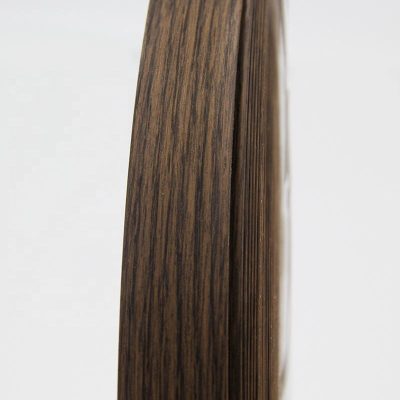The thickness of cabinet edge banding can vary depending on the material and the application. Here are the typical thicknesses for common types of edge banding:
Typical Thicknesses of Cabinet Edge Banding
- PVC (Polyvinyl Chloride) Edge Banding
- ABS (Acrylonitrile Butadiene Styrene) Edge Banding
- Thickness Range: 0.5 mm to 2 mm
- Common Thicknesses: 0.5 mm, 1 mm, and 2 mm
- Usage: Like PVC, ABS edge banding is used for various applications, with thicker bands offering greater durability and edge protection.
- Melamine Edge Banding
- Thickness Range: 0.3 mm to 1 mm
- Common Thicknesses: 0.3 mm, 0.5 mm, and 1 mm
- Usage: Often used for budget furniture and shelving, melamine edge banding provides a cost-effective way to finish edges.
- Wood Veneer Edge Banding
- Thickness Range: 0.5 mm to 2 mm
- Common Thicknesses: 0.5 mm, 1 mm, and 2 mm
- Usage: Used for high-end furniture and cabinetry, providing a natural wood finish that can be stained or varnished.
- Acrylic Edge Banding
- Thickness Range: 1 mm to 3 mm
- Common Thicknesses: 1 mm, 2 mm, and 3 mm
- Usage: Typically used in modern, high-gloss furniture and interior design applications, offering a sleek, contemporary look.
Selecting the Right Thickness
The choice of edge banding thickness depends on several factors:
- Durability Requirements: Thicker edge banding provides better protection against impacts and wear, making it suitable for high-traffic areas or surfaces that will undergo significant use.
- Aesthetic Preferences: Thinner edge banding offers a more subtle, seamless appearance, while thicker banding can create a bold, pronounced edge.
- Material of the Core: The type of wood-based panel (e.g., particleboard, MDF, plywood) and its intended use can influence the appropriate thickness of edge banding.
- Application Method: Some edge banding methods (e.g., iron-on) may be more compatible with certain thicknesses.
By choosing the right thickness of edge banding for your specific project, you can ensure a balance between aesthetics, durability, and functionality.

